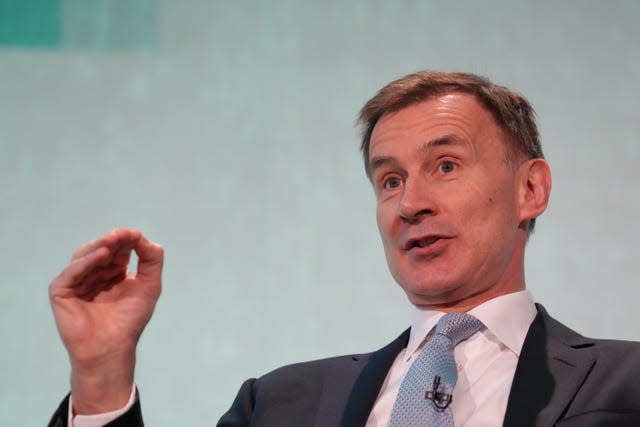Secondary schools with poorest pupils faced biggest cuts, say experts
Secondary schools with the most disadvantaged pupils have been hit hardest by funding cuts over the last decade, according to new research.
A new study by the respected Institute for Fiscal Studies (IFS) think tank found that between 2010 and 2021, the most deprived secondary schools saw a real-terms cut of 12%.
In contrast, the least deprived schools saw only a 5% funding cut in the same period.
But the Department for Education insisted the analysis “doesn’t tell the whole story”.
Researchers also found the extra funding boost for early-years providers in the most disadvantaged areas has dropped too. The IFS said the core hourly funding rate was now 38% extra, down from 60% in 2017.
The findings have been labelled a “damning indictment” of the Government and sparked calls for more funding in the education sector, which represents the second-largest element of public service spending behind healthcare.
It comes just weeks after Chancellor Jeremy Hunt used his autumn statement to offer support to businesses and cut the main rate of national insurance, while also pencilling in sharp curbs in public spending beyond the next general election.
The 120-page report, backed by the Nuffield Trust, found that despite extra funding between 2019 and 2021, education sectors across the board remain squeezed due to high inflation and rising cost pressures.
Josh Hillman, director of education at the Nuffield Foundation, said in a forward note to the report that those factors help explain “why the view from the chalkface always feels more austere than that from the Chancellor’s desk in the Treasury”.
Researchers said that despite Jeremy Hunt’s plans to give working parents of children under five an entitlement of 30 hours’ free childcare per week from September 2025, budgets for providers remain under heavy strain.
The IFS said that even with additional funding, core funding per hour for three and four-year-olds will be 12% below its level in 2012 when rent rises and the increase in the national living wage are factored in.
In older years, the think tank found that Government plans to increase school spending out to 2024 will only return the purchasing power of budgets per pupil to 4% below 2010 levels.
Researchers also said the value of the pupil premium, designed to support disadvantaged students, has fallen by 14% since 2015.
Report author Luke Sibieta warned that “education providers face a multitude of budget challenges”.
“Rising inflation and costs are eroding the real-terms value of budgets across the early years, schools, colleges and universities alike.

“At the recent autumn statement, the Government chose not to top up education spending plans, but instead focus on reducing taxes.
“We also see that schools serving the most disadvantaged children have faced the biggest spending cuts over time, and support for disadvantaged students in colleges and sixth forms is still relatively modest.”
Elsewhere researchers found cuts in further education and sixth reform have not been reversed by recent funding increases, even if support for disadvantaged students is up.
They also warned that spending per student in universities will return to the low point of 2011, just before tuition fees were hiked to £9,000. By 2024, the IFS said, it will be 24% lower than in 2012.
Higher inflation has also drastically curbed the the value of maintenance support, with students effectively £107 poorer than in 2020/21.
Daniel Kebede, general secretary of the National Education Union, said: “While the Prime Minister speaks regularly of wanting to create a world-class education system, the policies of his Government are resulting in the exact opposite.
“There is no end in sight for the perilous funding situation in our schools, sixth form colleges and early years education.”
He said that an increase in school funding of £1.7 billion is needed over the next two years, but warned even that sum would be a “sticking plaster”.
Geoff Barton, general secretary of the Association of School and College Leaders, said the report showed “the reality behind the Government’s boasts about record funding for schools. Investment has in fact failed to keep pace with school costs”.
He warned: “Nothing in the Chancellor’s recent autumn statement addressed this dire situation and it is therefore inevitable that more spending cuts will be needed and the room for meaningful pay awards that address the staff recruitment and retention crisis will be severely constrained.”
A Department for Education spokeswoman said: “This doesn’t tell the whole story. The IFS’s analysis on school spending patterns stops at 2021-22.
“We are taking the long-term decisions to improve our education system for generations to come by investing record funding into schools.
“Overall school funding is rising to its highest level in history, in real terms, next year – totalling £59.6 billion.”


